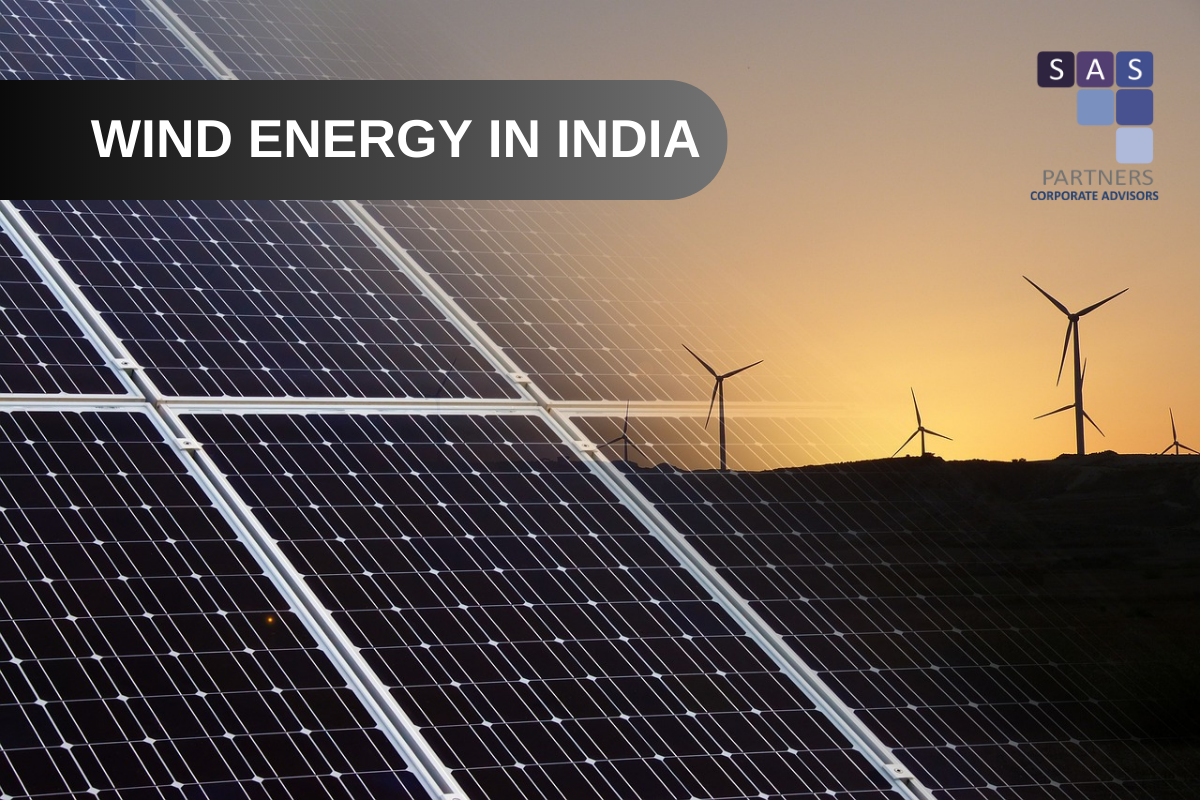
Wind Energy in India – An Overview

Overview of Renewable Energy in India
- The non-conventional energy space in India has become highly attractive for investors and received an FDI inflow of US $ 14.12 billion between April 2000 – March 2023.
- More than Rs. US $ 70 billion has been invested in India’s renewable energy sector since 2014.
- India ranked 3rd on the EY Renewable Energy Country Attractive Index 2021.
- As of April 2023, Renewable energy sources, including biomass, waste to power and waste to energy, have a combined installed capacity of 532.48 GW.
- India is the only country among the G20 countries that is on track to achieve its targets under the Paris Agreement
- India was ranked 4th in wind power, 5th in solar power and 4th in renewable power installed capacity, as of 2020. Power generation from solar and wind projects is likely to be cost-competitive relative to thermal power generation in India in 2025-2030.
Wind Energy in India
- With an installed capacity of 42633 MW of Wind Energy, Renewable Energy Sources (excluding large Hydro) currently account for 30.08% (125160 MW) of India’s overall installed power capacity of 416059 MW as of 31.03.2023.
- India’s installed wind power capacity is the 4th largest in the world. The wind power capacity is mainly spread across, southern, western and north-western regions of India
- Wind Energy holds the major portion of 34.06% of total RE capacity among renewable and continues as the major supplier of clean energy.
- The capacity utilization factor is nearly 18% in the fiscal year 2022–23 (19.33% in 2018–19, 16% in 2017–18, 19.62% in 2016–17 and 14% in 2015–16). 70% of annual wind generation is during the five-month duration from May to September coinciding with Southwest monsoon duration.
- The government of India has fixed a target of 500 GW of Renewable Energy by 2030 out of which 140 GW will be from Wind.
- Overall the future of Wind Energy in India is bright as energy security and self-sufficiency is identified as the major driver.
- Wind power accounts for nearly 10% of India’s total installed utility power generation capacity and generated 71.814 TWh in the fiscal year 2022–23, which is nearly 4.43% of total electricity generation.
- The Indian government has installed over 800 wind-monitoring stations all over the country through the National Institute of Wind Energy (NIWE) and issued wind potential maps at 50m, 80m, 100m, and 120m above ground level.
- The recent assessment indicates a gross wind power potential of 302 GW in the country at 100 meters and 695.50 GW at 120 meters above ground level. The estimated potential is found on the higher side as the present installed capacity is operating below 20% CUF on average against the minimum 30% CUF considered while assessing the wind potential.
Gujarat & Tamil Nadu – the two major wind power generating states in India
- The Gujarat government’s focus on tapping renewable energy has led to a sharp rise in wind power capacity in the last few years. According to official data, wind power generation capacity in the state has increased a staggering ten times in the last six years. Gujarat has the highest share (around 24%) of the total installed wind power capacity of the country.
- Tamil Nadu’s wind production capacity was 2nd highest (around 23% share) after Gujarat as of 31 May 2023. The Government of Tamil Nadu realized the importance and need for renewable energy, and set up a separate Agency, as a registered society, called the Tamil Nadu Energy Development Agency (TEDA) as early as 1985. The Muppandal Wind Farm is India’s largest operational onshore wind farm and was developed by the TEDA.
Wind Energy Capacity – May 2023
| STATE | TOTAL CAPACITY (MW) |
| GUJARAT | 10,415.82 |
| TAMIL NADU | 10,124.52 |
| KARNATAKA | 5,303.05 |
| RAJASTHAN | 5,193.42 |
| MAHARASHTRA | 5,026.33 |
| ANDHRA PRADESH | 4,096.65 |
| MADHYA PRADESH | 2,844.29 |
| TELANGANA | 128.10 |
| KERALA | 62.50 |
| OTHERS | 4.30 |
| TOTAL | 43,198.98 |
Incentives for Renewable Energy in India
- Concession on import duty on specified wind turbine components.
- 10-year income tax holiday for wind power generation projects.
- Concessional custom duty exemption on certain components of wind electric generators
- 100% exemption from excise duty on certain wind turbine components.
- REC Mechanism.
- Permitting Foreign Direct Investment (FDI) up to 100 per cent under the automatic route.
- Implementation of Green Energy Corridor project to facilitate grid integration of large-scale renewable energy capacity addition.
- Technical support including wind resource assessment and identification of potential sites through the National Institute of Wind Energy, Chennai.
- IREDA finance scheme for wind power projects.
- Special incentives are provided for the promotion of exports from India for various renewable energy technologies under renewable sector-specific SEZ.
- Feed-in-Tariff (FIT) scheme for wind projects up to 25 MW
Policies
- Promotes optimum utilisation of wind energy resources by creating a facilitative framework for repowering.
- Providing an interest rate rebate of 0.25% over and above the existing interest rate rebate offered to new wind energy projects.
- All fiscal and financial benefits offered to new wind power projects will be extended to repowering projects
- Aims to achieve a hybrid wind-solar capacity of 10 GW by 2022.
- Around 15,000 MW of wind-solar hybrid capacity is expected to be added between 2020-25.
- According to a new report by GWEC and MEC Intelligence (MEC+), between 2021 and 2025, India is expected to install ~20.2 GW of wind power capacity.
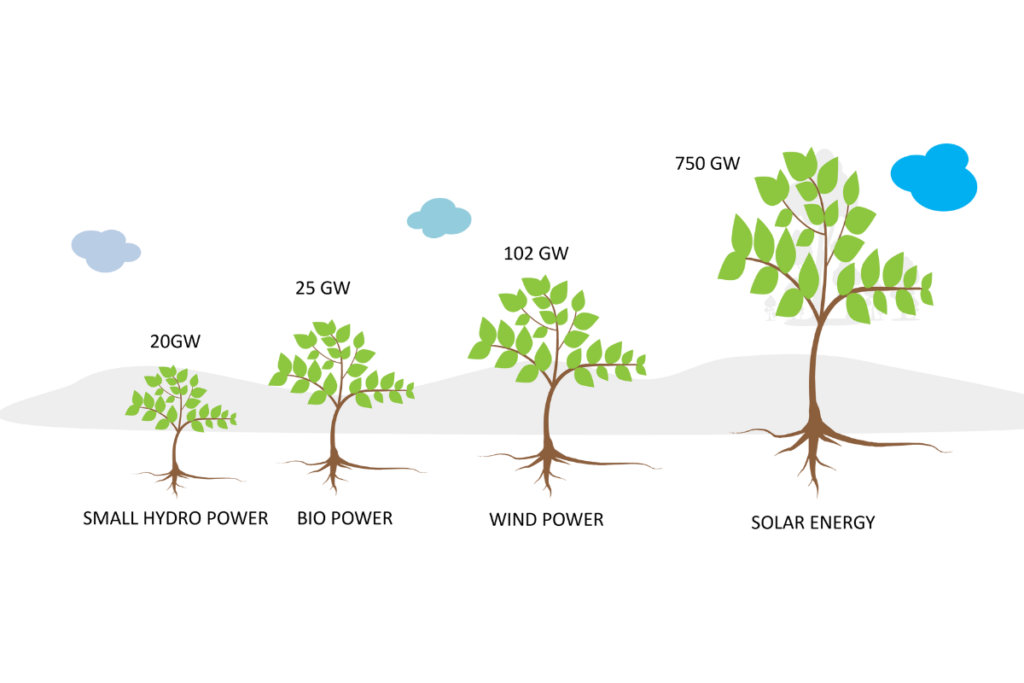
India’s Renewable Energy Sources – Installed Capacity
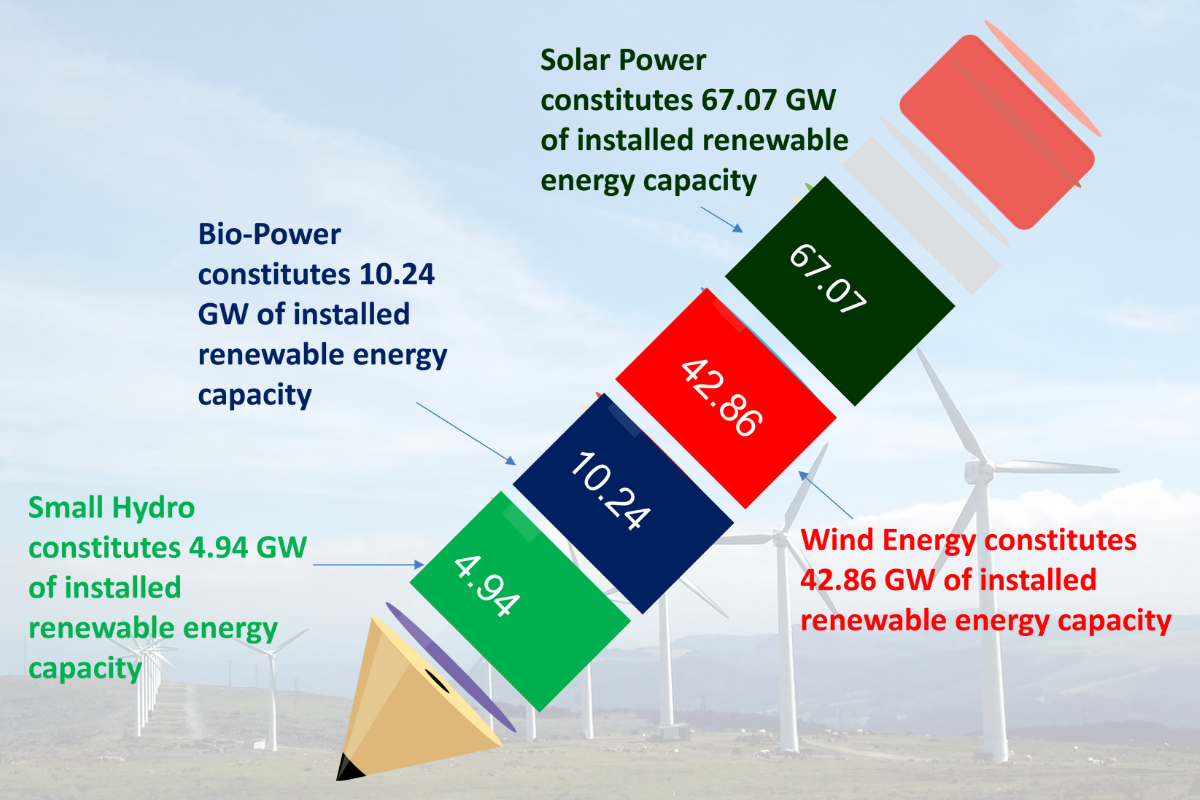
Wind Energy in India – Offshore Wind PotentialWind Energy in India –
- India has only recently started to give a serious thought to generating energy from offshore wind turbine.
- India has a vast coastline of over 7,600 kms with relatively shallow waters (within 12 nautical miles of the coast) near to shore in most parts showing good prospects of harnessing offshore wind energy.
- To explore and exploit the potential, the Government of India notified the Offshore Wind Energy Policy in 2015
- The National Institute of Wind Energy (NIWE) has been appointed the nodal agency to asses and facilitate the development of offshore wind energy and demarcate blocks for developers
- Preliminary studies have indicated that there is good potential for offshore wind off the coasts Gujarat & Tamil Nadu.
Offshore Wind Potential – FOWIND ProjectWind Energy in India –
- The EU Delegation to India, in close cooperation with the Indian Ministry of New and Renewable Energy, has awarded a €4 million grant to a GWEC-led consortium under the Indo-European Cooperation on Renewable Energy programme.
- FOWIND is a four-year project to develop a roadmap for offshore wind development in India, with a focus on the states of Gujarat and Tamil Nadu. Its output will be supported by preliminary resource assessments to identify potential areas for offshore development along the coasts of the States of Gujarat and Tamil Nadu.
- The NIWE assessment suggests that there could be an offshore wind energy potential of 36GW on the coast of Gujarat and 35 GW along the coast of Tamil Nadu.
- Under the FOWIND project supported by the European Union, 8 zones each in Gujarat and Tamil Nadu were identified as potential zones for the development of offshore wind energy projects.
Tamil Nadu Offshore Wind Energy Potential MapWind Energy in India –
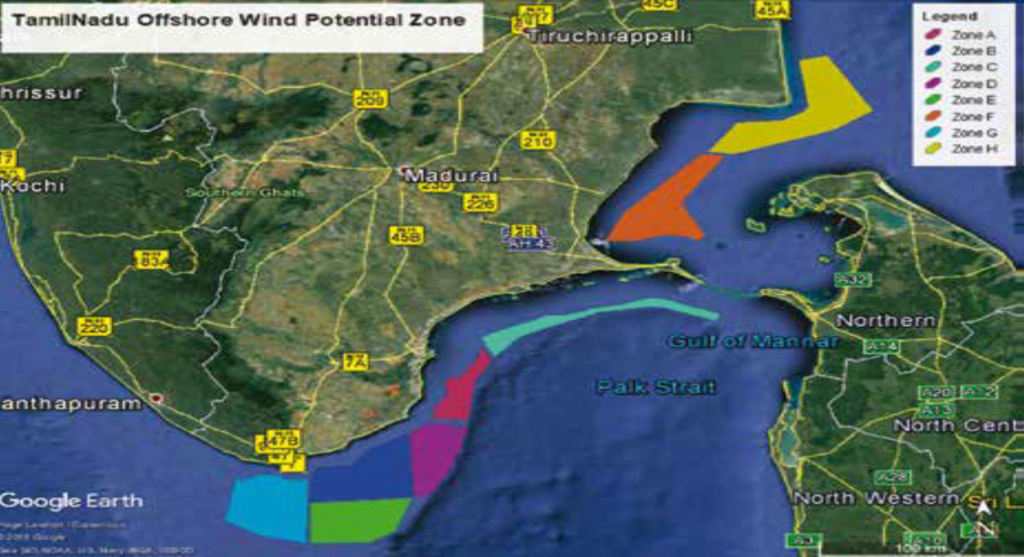
Gujarat Offshore Wind Energy Potential MapWind Energy in India –
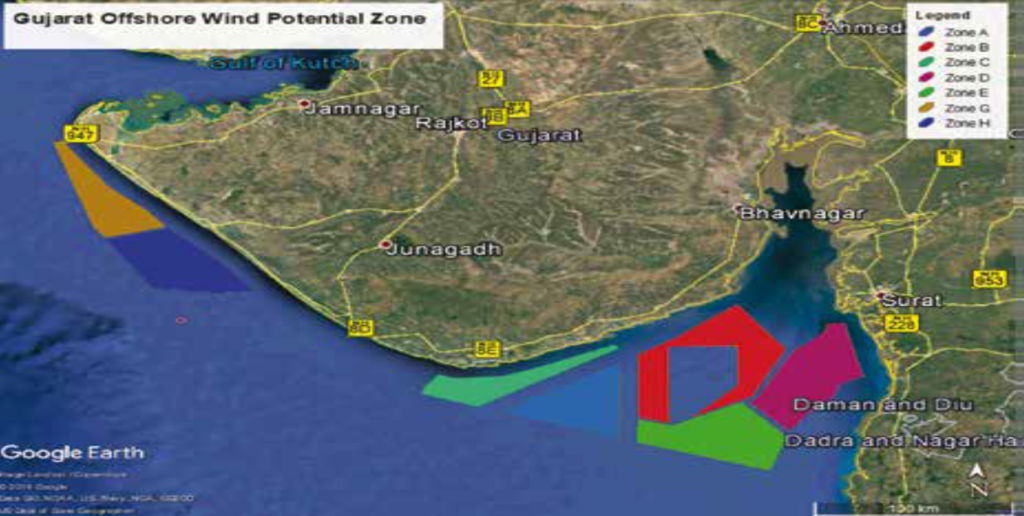
DevelopmentsWind Energy in India –
- India’s liberal foreign investment policy permits 100% FDI in the renewable energy sector.
- The International Renewable Energy Agency (IRENA), in partnership with the Indian G20 Presidency, launched a new report on how low-cost finance can accelerate the energy transition.
- In February 2023, IREDA announced to establish an office in Gujarat’s GIFT city to finance renewable energy projects in foreign currency
- In December 2021, India’s largest energy provider, Tata Power, was awarded a contract by the Maharashtra State Electricity Distribution Company Limited (MSEDCL) to set up a 300 MW wind-solar hybrid power plant.
- In October 2021, the UAE announced investment of US$ 75 billion in India and collaborated on clean energy projects.
- In August 2021, Copenhagen Infrastructure Partners (CIP) signed an investment agreement with Amp Energy India Private Limited, to facilitate joint equity.
Opportunities Wind Energy in India –
- India is estimated to have renewable energy potential of 900 GW from commercially exploitable sources – Solar energy: 750 GW; Wind power : 102 GW; Bio-energy: 25 GW; and Small Hydro: 20 GW.
- The country plans to reach 450 GW of installed renewable energy capacity by 2030, with 280 GW (over 60%) expected from solar power.
- 975.60 MW of renewable energy capacity was added in January 2022.
- Around 15,000 MW of wind-solar hybrid capacity is expected to be added between 2020-25. According to a new report by GWEC and MEC Intelligence (MEC+), between 2021 and 2025, India is expected to install 20.2 GW of wind power capacity, an increase of 50% compared with the 39.2 GW wind power capacity installed in the country in 2020-21
- Development of offshore wind energy projects in Tamil Nadu & Gujarat.
List of Wind Energy related Organizations & Associations
- National Institute of Wind Energy
- Indian Wind Turbine Manufacturers Association
- The India Renewable Energy Development Agency
- Indian Wind Energy Association
- Indian Wind Power Association
- Ministry of New & Renewable Energy
- Tamil Nadu Energy Development Agency
- Gujarat Energy Development Agency
About the Author
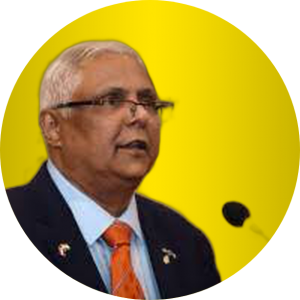 |
VIJAY KUMAR VADDADI, India Entry & International Affairs
Mr. Vijay Kumar is an Industrial Economist with 35+ years of experience in Economic Analysis, Trade & Investment Promotion, International Business Strategy & Cross-Cultural Impact. A Post-Graduate in Economics with specialization in Industrial Economics and Economics of Transportation, Public Utilities & Social Infrastructure from the University of Bombay (1982). In 1984, he joined the Consulate General of the Netherlands in Mumbai as an Economic & Commercial Officer and continued his association with the Netherlands Government (NBSO) for over 30 years. At SAS Partners, he heads the Trade and Investment Promotion activities, supports organising programmes for international business delegations, curates knowledge reports, and market studies and also helps our international clients in understanding the Indian business landscape better. More articles authored by him can be accessed here. |


